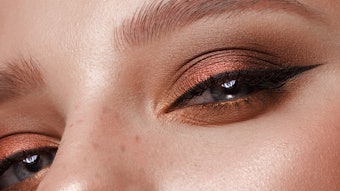
Dermaplaning is a simple and safe procedure for exfoliating the epidermis and ridding the skin of fine vellus hair (peach fuzz). It has been used for many years, but many estheticians don’t even know it exists, and certainly, many don’t use it. (Editor's note: Skin care professionals must make sure dermaplaning is within their scope of practice before doing the procedure. For a complete list of state boards with contact information, log on to www.SkinInc.com/education/statelicensing.) When patients hear the word dermaplaning, they quickly associate the term with the procedure known as dermabrasion, and won’t even consider it as a possible treatment. Dermabrasion is a medical procedure in which the skin is abraded down to the dermis using a whisklike device. There are many complications associated with dermabrasion, including infections and scarring, which is why it is not commonly used anymore. Dermaplaning, on the other hand, is a simple shaving of the epidermis.
Because dermaplaning is a quick procedure with few to no adverse effects, it has quickly gained popularity among cosmetic medical providers across the country. Using a scalpel and a delicate touch, the provider simply abrades the surface of the skin using light feathering strokes. This is a great treatment to offer to patients who are pregnant or nursing who want a deep exfoliation, but are not allowed to use peeling agents on their skin because of the risk that the chemicals will be absorbed into the blood stream, and may be transferred to the fetus or the child. It is also a first choice for patients who have excess vellus hair on the skin. This hair often causes a buildup of dirt and oils in the follicles, so removing the hair gives the patient healthier looking skin.
Although merely an old wives’ tale, many patients are often concerned that the hair will grow back heavier and darker after dermaplaning. This is not the case. As long as the hair is superficial vellus hair, it will grow back at the same rate and texture as before the treatment.
Removing epidermal skin also allows products to penetrate more readily into the deeper layers. Physicians may recommend this treatment to prepare the skin for medical procedures such as laser treatments or deep chemical peels. It also may be used by estheticians to prepare the skin for superficial chemical peels or before a cleansing facial.
Dermaplaning is most often used on patients with rough, dry skin, superficial hyperpigmentation, mild acne scarring, or fine lines and wrinkles. The treatment results in a more refined, smooth, “glowing” appearance.
Protocol
- Explain the procedure to the patient and inform them that, although unlikely, there is a chance that they may obtain a superficial scrape or nick on the skin.
- Have the patient sign a consent form that states the possibility of complications.
- Clean the patient’s skin thoroughly. (See Supplies Needed.)Using a cleanser with mild keratolytic properties, such as beta or alpha hydroxy acids, will loosen dead skin and allow for a deeper exfoliation with the scalpel.
- Prepare the scalpel by putting a No. 10 blade in the handle. Have extra blades ready because they can dull during the treatment.
- Make sure the client’s skin is completely dry. Blot with facial tissues or fan the skin. If the skin has any moisture on it at all, there is an increased chance of nicking the skin, and the treatment will not be as effective.
- Because you are holding a scalpel to their skin, make it clear to the client that they must sit still during the procedure. (See Dermaplaning Cautions.)
- Hold the blade at a 45° angle, and start abrading the surface with precise movements in the opposite direction of hair growth. It is important to develop a pattern, such as starting at one side of the face and finishing at the other, to ensure that all areas are covered.
- After the entire area has been treated, place a hydrating moisturizer and sunscreen on the skin to finish the treatment.
- If another peeling procedure will be used, ensure that you use extra caution; the peel will penetrate more deeply after you have removed the superficial layers of skin.
What the patient can expect
There is no downtime associated with this procedure. The patient should be educated about the importance of using sunscreen to reduce the chance of hyperpigmentation. Dermaplaning can be done as often as every two weeks, although it is usually done when vellus hair starts to grow back, which is generally in one month’s time.
Contraindications
The only contraindications to dermaplaning include an allergy to nickel, numerous raised lesions on the skin and inflamed acne.
To learn more about this topic, visit https://shop.trueuesthetics.com/.
New Book by Terri Wojak! Aesthetics Exposed: Mastering Skin Care in a Medical Setting and Beyond
Disclaimer:
The above paid-for content was produced by and posted on behalf of the Sponsor. Content provided is generated solely by the Sponsor or its affiliates, and it is the Sponsor’s responsibility for the accuracy, completeness and validity of all information included. Skin Inc. takes steps to ensure that you will not confuse sponsored content with content produced by Skin Inc. and governed by its editorial policy.










